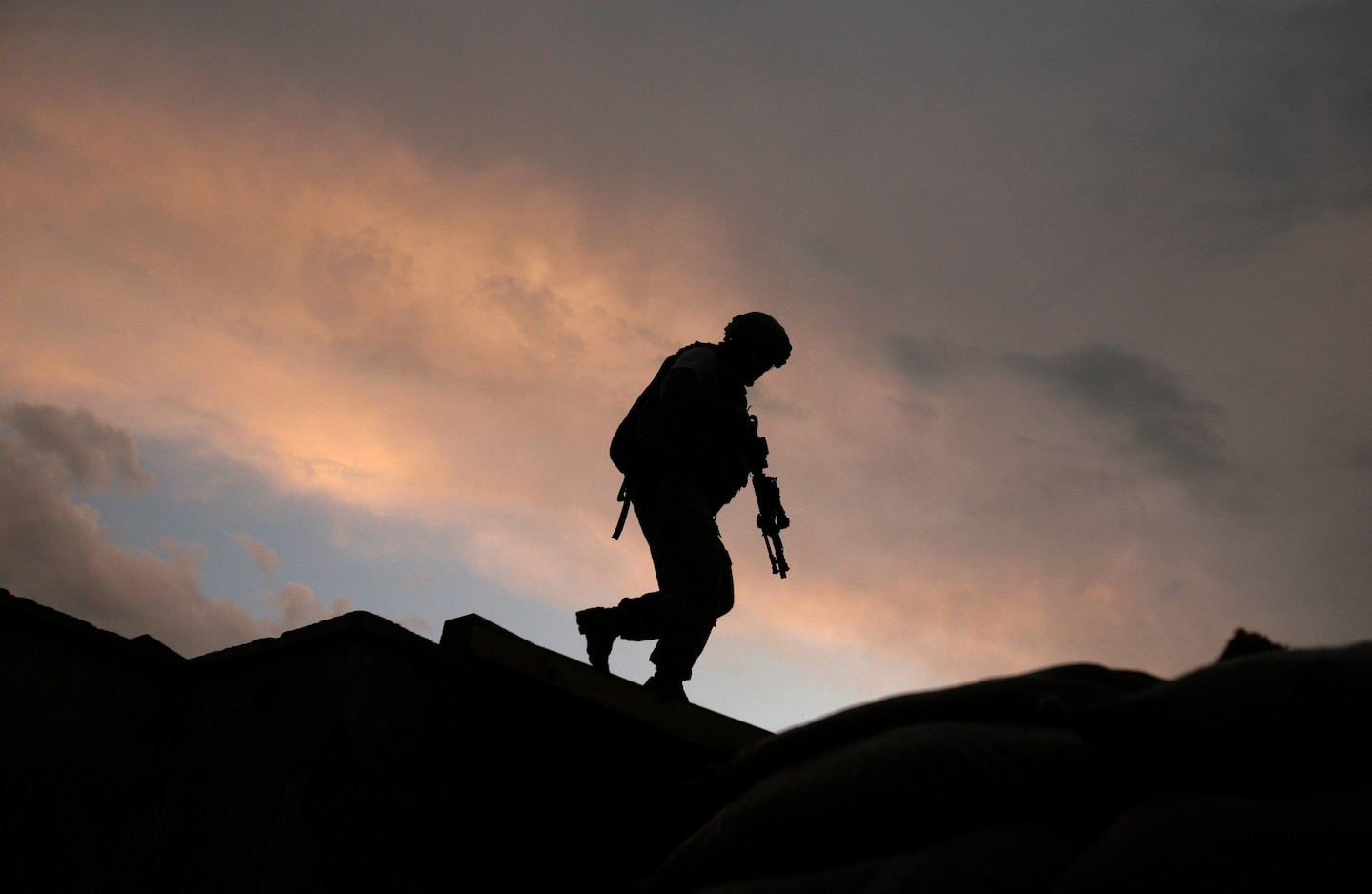There’s no sign the U.S. is leaving the Middle East soon. And that’s a good thing.

“Even in this time, we remain a steady partner,” argued Gen. Kenneth “Frank” McKenzie Jr., the Central Command head, in a telephone interview Thursday from Al Udeid Air Base in Qatar. McKenzie had just completed a tour of 10 countries in the region he oversees.
McKenzie said the Pentagon plans to reduce the number of U.S. troops in Afghanistan, Iraq and Syria, but will maintain American support for local forces there. Despite pressure from Russia and Iran, which want to augment their regional power, “we remain the partner of choice,” he said. Governments may “hedge” by dallying with Moscow or Beijing, but U.S. weapons and training are so superior that “if you want to get good stuff, you get ours.”
The Centcom commander visited Afghanistan on Tuesday to discuss the status of U.S. forces there. He said drawdowns from the current level of about 8,600 would be “conditions based,” and would depend on the Taliban meeting its promises to reduce violence, check al-Qaeda and the Islamic State, and conduct peace talks with the Afghan government. Another official told me the Pentagon is weighing withdrawal of another 4,000 troops, which would keep at least 4,500 there on Election Day, but McKenzie wouldn’t discuss numbers.
McKenzie said he’s continuing to investigate intelligence reports that Russia offered bounties to Taliban fighters to kill U.S. and coalition troops. “I remain worried about it,” he said. Ever since the first reports about bounties in January, McKenzie’s advice to intelligence colleagues has been “keep digging” and “that work continues,” he said.
Trump has called the allegation about Russian bounties a “hoax,” but McKenzie’s comments made clear that for the Pentagon this remains an open question.
Iraq and Syria are among the other countries where Trump has pressed to withdraw troops. But in both cases, the U.S. mission of stabilization and support continues, albeit at lower numbers.
McKenzie said that after visiting Baghdad last week, he’s confident that “we will be able to keep a military platform in Iraq,” although “the numbers are going to get smaller” than the current level of about 5,000. McKenzie credited Iraq’s new prime minister, Mustafa al-Kadhimi, for authorizing strikes on Kataib Hezbollah, an Iranian-backed militia that has attacked U.S. forces.
“We need to give him room and patience,” McKenzie said of the Iraqi prime minister. He noted that despite Iran’s hopes of driving American forces from Iraq, “that avenue is now closed,” thanks to Kadhimi’s actions. The future status of U.S. forces in Iraq will be confirmed in a “strategic dialogue” with Baghdad over the next few weeks, he said.
In Syria, too, the American presence continues. McKenzie said he has received “no order to adjust our forces” there from the current level of about 500. The Centcom commander met with Gen. Mazloum Abdi, the leader of the Kurdish-led Syrian Democratic Forces, to discuss American support for the SDF’s campaign against remnants of the Islamic State and detention of its captives. McKenzie also visited the U.S. garrison at Tanf, along the Baghdad-Damascus highway in southern Syria, and he said this blocking force will remain, too.
One rationale for keeping U.S. forces in the region is to check Iran, which McKenzie said “still has the clear aspirational role of ejecting the U.S.” But after Iranian proxy strikes in Iraq, Syria and Saudi Arabia — and brazen attacks on oil tankers in the Persian Gulf — Tehran is now “recalculating,” McKenzie said. He described the current unsteady balance as “contested deterrence.”
One reason it’s so hard for the United States to leave this region is that there’s always a new crisis. That may be happening again with the recent attacks on Iran’s centrifuges at Natanz and missile-testing sites. Iran blames Israel, and at some point, said McKenzie, “my experience with Iran tells me they will respond.”
My takeaway from McKenzie’s survey of the region: The recipe for a sustainable U.S. presence in the Middle East is small numbers, low casualties, good partners and adversaries who frighten their neighbors.
Read more:






